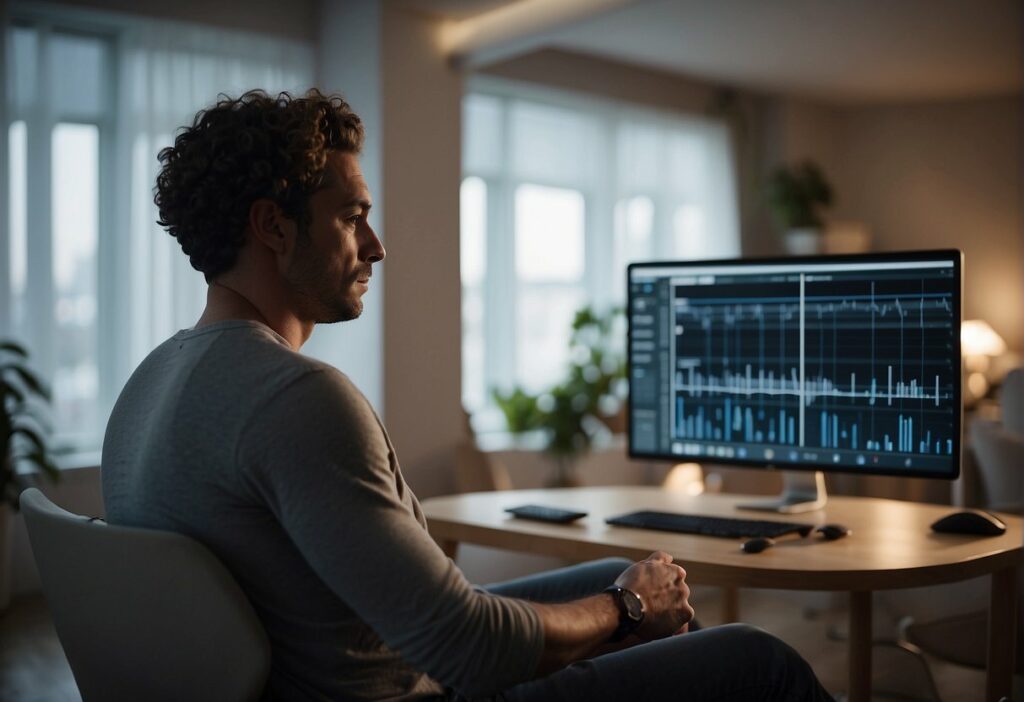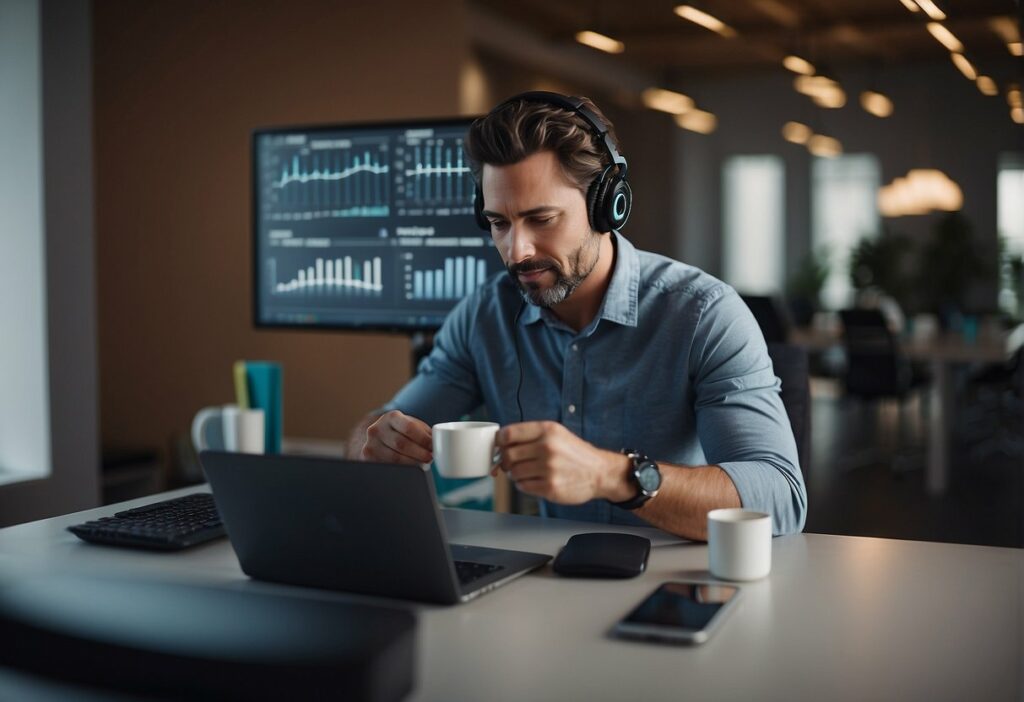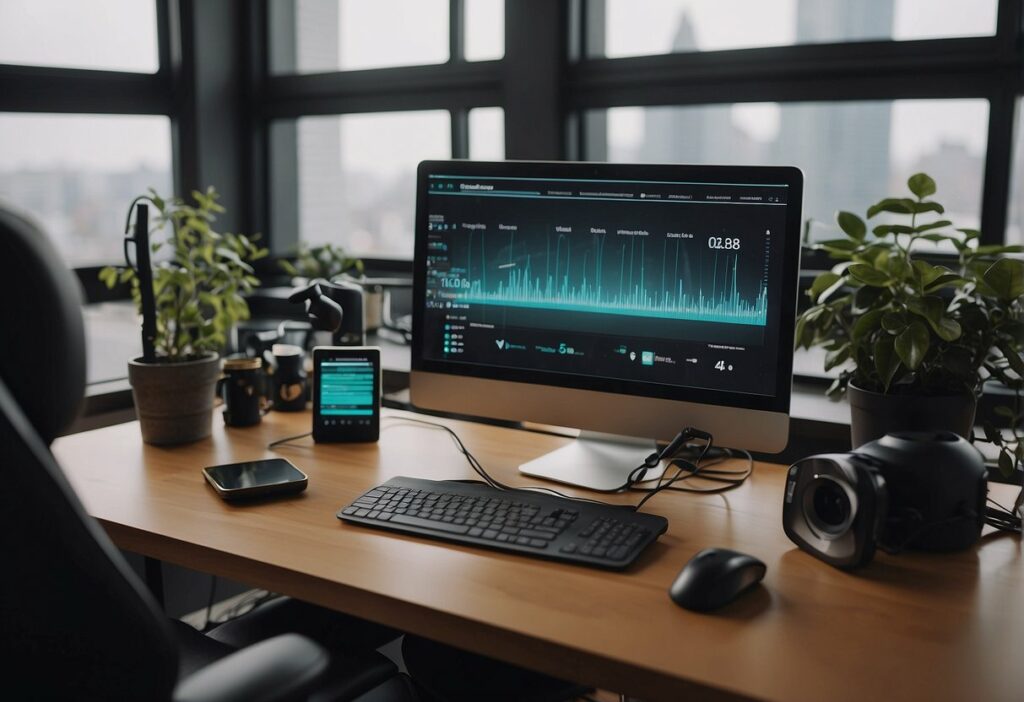Integrating Biofeedback Technology into Daily Life: Strategies for Stress Reduction

In the fast-paced world we live in, stress has become a common challenge affecting millions of people on a daily basis. With an increasing interest in personalized health and well-being, biofeedback technology has emerged as a promising tool for managing stress.
Biofeedback devices measure physiological signals such as heart rate, muscle tension, and skin conductance, allowing individuals to gain awareness of their bodily states. By providing real-time feedback, these technologies enable users to recognize and modify their stress responses effectively.
Harnessing the potential of biofeedback requires a blend of technology and techniques. Mental health professionals and tech developers are collaborating to create intuitive applications that facilitate the use of biofeedback in everyday life.
From wearable gadgets to smartphone apps, these tools are designed to be integrated seamlessly into users’ daily activities. This integration not only makes stress management more approachable but also encourages consistent practice, which is essential for long-term benefits.
Understanding Biofeedback

Biofeedback is a technique that trains individuals to improve their health by controlling certain physiological processes that normally happen involuntarily, such as heart rate, muscle tension, and skin temperature.
The Science of Biofeedback
Biofeedback works on the premise that, with the aid of equipment to provide immediate and accurate feedback, an individual can learn to exert conscious control over involuntary bodily functions. The process involves sensors and measurement devices that detect and relay information about physiological responses. Through real-time feedback, individuals can attempt to manipulate these responses with the goal of achieving a desired outcome, most notably, stress reduction and relaxation.
- Physiological Parameters Monitored:
- Heart rate
- Muscle tension
- Skin conductance
- Respiration rate
- Brain waves (EEG)
Types of Biofeedback Techniques
There are several biofeedback methods, each targeting a specific physiological response:
- Electromyography (EMG): This technique measures muscle activity and is used to help control muscle tension.
- Thermal Biofeedback: Monitors skin temperature, which can reflect blood flow and stress levels.
- Galvanic Skin Response (GSR): Tracks the sweat gland activity to indicate arousal or stress.
- Heart Rate Variability (HRV): Assesses the time interval between heartbeats and can be used to improve relaxation and resilience to stress.
- Electroencephalography (EEG): Records brain wave patterns, often used in meditation and relaxation training.
Each technique involves sensors placed on the body, which are connected to a monitoring device to provide feedback. Users are then trained to control these physiologic processes, ultimately aiming to influence their mental state and manage stress without the need for medication or other interventions.
Practical Biofeedback Applications

Biofeedback technology offers concrete methods for managing stress by providing real-time data on physiological functions. This allows individuals to gain control over their stress responses, enhancing their well-being.
Stress Reduction Strategies
Biofeedback devices measure various physiological parameters such as heart rate, skin temperature, and muscle tension, equipping individuals with the knowledge to identify stress triggers. They can use this data to:
- Monitor heart rate variability (HRV): High HRV is often associated with lower stress levels. Users can track their HRV to gauge their stress and apply techniques to improve it.
- Control muscle tension: Biofeedback helps users discern tensed muscles often correlated with stress and teaches them relaxation techniques to alleviate the tension.
Enhancing Relaxation Practices
Biofeedback complements traditional relaxation methods by providing tangible feedback on their effectiveness.
- Deep Breathing Exercises: By visually monitoring breathing rates and patterns, individuals can adjust their breathing to enhance relaxation.
- Mindfulness and Meditation: Biofeedback tools can help users maintain a meditative state by indicating when the body is relaxed and the mind is clear.
Integration into Daily Routines

Biofeedback technology can seamlessly integrate into one’s daily life to manage stress by becoming a part of regular activities at work and home.
Biofeedback in the Workplace
In a fast-paced work environment, employees can use biofeedback devices to monitor physiological stress indicators. Wearable technology, such as smartwatches or fitness bands, can track heart rate variability (HRV) during the day. This information helps individuals recognize stress patterns and take breaks accordingly. Many companies also provide biofeedback-equipped relaxation rooms where employees can practice stress management techniques for a few minutes daily, thereby promoting wellness and productivity.
Incorporating Biofeedback in Domestic Settings
At home, biofeedback can be integrated into daily living by using smart home systems. For instance, these systems can adjust lighting and temperature based on biofeedback data to create a more relaxing environment. Devices like smart mattresses measure sleep quality, while biofeedback chairs can prompt posture adjustments and relaxation sessions. Families can dedicate a small area for a mindfulness corner equipped with biofeedback tools for practicing controlled breathing and meditation exercises.
Technological Advances in Biofeedback

Biofeedback technology has significantly evolved, with groundbreaking innovations in mobile and wearable devices enhancing the user’s ability to monitor and manage stress effectively.
Mobile Biofeedback Solutions
Mobile applications now offer sophisticated biofeedback functionalities, transforming smartphones into portable stress management systems. These apps employ sensors to provide real-time data on physiological parameters like heart rate variability (HRV), enabling users to track and regulate their stress levels. For instance:
- ‘Calm Beat’: Monitors HRV and provides guided breathing exercises.
- ‘Stress Scan’: Assesses stress levels by measuring changes in HRV.
Wearable Biofeedback Devices
Advancements in wearable technology have led to the development of devices designed specifically for biofeedback, allowing for continuous stress monitoring. Common features of these devices:
- Real-time stress level indicators: Often through changes in skin conductance or heart rate.
- Haptic feedback: Vibrations for prompting relaxation techniques when high stress is detected.
Examples include:
| Device | Functionality |
|---|---|
| Fitbit | Tracks activity, sleep, and provides guided breathing sessions. |
| Oura Ring | Measures sleep patterns and heart rate, suggesting stress management tips. |
Navigating Challenges

In integrating biofeedback technology into daily life for stress management, users may encounter certain challenges. Key among these are privacy concerns and the need to manage and overcome potential technological barriers.
Addressing Privacy and Data Security
With the integration of biofeedback technology, data security becomes a critical concern. Users should verify that their devices have robust encryption methods to protect sensitive health data. It’s essential to choose products from companies with transparent privacy policies that align with industry standards like HIPAA.
- Checklist for Data Security:
- Encryption of data in transit and at rest
- Regular software updates and patches
- Clear privacy policy available for review
Overcoming Technological Barriers
Technological challenges can range from interoperability with other devices to the ease of use of the biofeedback technology itself. Users should seek devices that offer:
- User-Friendly Interfaces: Ensures ease of interaction for all users, regardless of their tech-savviness.
- Compatibility: Devices should be compatible with a wide range of operating systems and platforms.
- Customer Support: Accessible and helpful support for troubleshooting.
- Table for Technological Compatibility: Feature Description Cross-Platform Works on multiple operating systems like iOS, Android, Windows, etc. Plug and Play Minimal setup required, making it easy for users to start using the device Support Readily available customer service team for any technical issues
